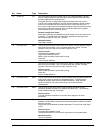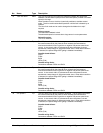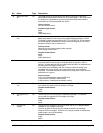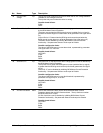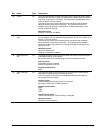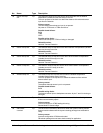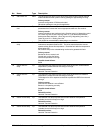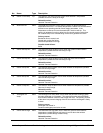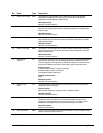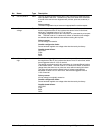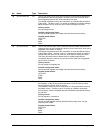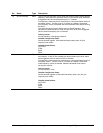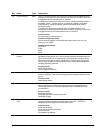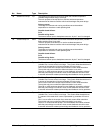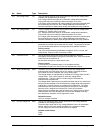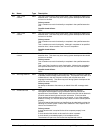
GEH-6385 Reference and Troubleshooting, 2300 V Drives Chapter 2 Faults and Troubleshooting
•
••
•
2-15
No. Name Type Description
77 HtSink DS rise high Alarm
The HtSink DS rise high alarm occurs when the diode source heatsink
temperature (variable DS heat sink temp) is too far above the ambient
temperature (variable Bridge ambient temp).
Related functions:
Heatsink Thermal Protection
78 HtSink A rise high Alarm The HtSink A rise high alarm occurs when heatsink A temperature (variable
Heat sink A temp) is too far above the ambient temperature (variable Bridge
ambient temp).
Related functions:
Heatsink Thermal Protection
79 HtSink B rise high Alarm
The HtSink B rise high alarm occurs when heatsink B temperature (variable
Heat sink B temp) is too far above above the ambient temperature (variable
Bridge ambient temp).
Related functions:
Heatsink Thermal Protection
80 HtSink C rise high Alarm
The HtSink C rise high alarm occurs when heatsink A temperature (variable
Heat sink C temp) is too far above above the ambient temperature (variable
Bridge ambient temp).
Related functions:
Heatsink Thermal Protection
81 HtSink temp
imbalanc
Trip The HtSink temp imbalanc trip fault occurs when two of the measured heatsink
temperatures differ by an amount exceeding heatsink imbalance fault level.
The main purpose of the trip fault is to detect the absence of a thermal sensor
input from the heatsink, the failure of the sensor itself or heat pipe failure.
Primary causes:
A heatsink thermal sensor input is not present.
A heatsink thermal sensor is defective
The heatpipe system is defective.
Possible board failures:
BICM
Related functions:
Heatsink Thermal Protection
82
HtSink blower
failed
Trip
The HtSink blower failed trip fault occurs when the drive is running and the
cooling fans are not operating.
Primary causes:
Blower starter tripped due to blower motor overload or failure.
Related functions:
Heatsink Thermal Protection
83 Run permissive lost Alarm
The Run permissive lost alarm occurs when the run permissive circuit is open.
The state of the run permissive circuit is determined by the value of the
variable to which parameter Run permissive sel points. The alarm can be
disabled by setting parameter Run permissive sel equal to Unused.
Related functions:
Sequencer Permissives
84 Cont req while flt Alarm
The Cont req while flt alarm occurs when contactor A is commanded to close
and a trip fault is present in the drive.



